Breast cancer is a serious and often fatal illness that affects both men and women, though it strikes women at a much higher rate. Uncontrolled growth of abnormal breast cells gives rise to a lump or mass.
The prognosis of breast cancer patients can be greatly improved through early detection and prompt treatment. The purpose of this blog is to provide readers with information about breast cancer, from its causes to its diagnosis and treatment.
Introduction Breast Cancer Treatment
Breast cancer is a malignant neoplasm that begins in the breast’s cells, specifically those lining the milk ducts and lobules. It can happen to both men and women, but women actually have a much higher risk.
You Should also know – Immunotherapy
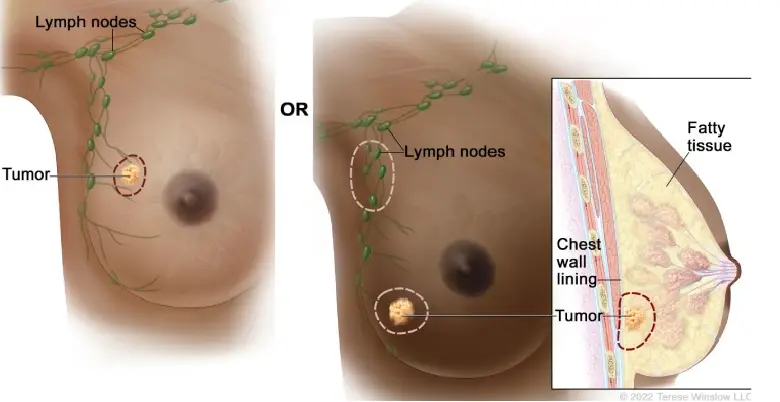
There are several types of breast cancer, some of which are more dangerous than others. Many breast lumps are benign and pose no health risk to the patient at all.
Types of Breast Cancer
Non-invasive breast cancer, also known as ductal carcinoma in situ (DCIS), is characterised by the presence of abnormal cells in the lining of a breast duct. No other tissues outside of the duct have been invaded.
- The most common form of breast cancer is invasive ductal carcinoma (IDC). In this form, cancer cells escape the duct and invade neighbouring tissues, with the potential to metastasize elsewhere in the body.
- Cancer that begins in the lobules of the breast and spreads to other parts of the body is called invasive lobular carcinoma (ILC). Compared to IDC, it’s much rarer.
- The lack of oestrogen, progesterone, and HER2 receptors in triple-negative breast cancer makes it more difficult to treat than other types of the disease.
- Overexpression of the HER2 protein is a hallmark of HER2-positive breast cancer. It’s more dangerous, but there are targeted treatments for it.
Have you looked at : Kidney Transplant
- Redness, swelling, and increased body temperature in the breast are common symptoms of inflammatory breast cancer, a rare but aggressive subtype of breast cancer.
Breast Cancer Symptoms
In order to effectively treat breast cancer, early detection is essential. Recognizing potential warning signs requires familiarity with the symptoms. Breast cancer symptoms often include:
- Breast Growths: A lump or mass in the breast is one of the most obvious warning signs of breast cancer. Many breast lumps are painless, but not all of them are malignant. Many noncancerous conditions can also cause breast lumps.
- Alterations to the Size or Form of the Breasts: Concern should be raised at the onset of any change in breast size or form. The breasts may swell, change shape, or become asymmetrical.
- Nip Alterations: Inversion, retraction, and discharge are all possible nipple changes. Nipple discharge, whether bloody or clear, is cause for concern, especially if it occurs when the nipple is not being squeezed.
- Skin Alterations: Skin changes such as redness, dimpling, or a rash-like appearance on the breast may be a sign of breast cancer. The skin may feel like an orange peel as a result of these alterations.
- Pain: Pain is not always present in breast cancer. However, if you have pain in your breasts or chest that doesn’t seem to be related to your period, you should see a doctor. Regular breast self-examinations and routine screenings are crucial for early detection because some people may experience no symptoms at all.
Breast Cancer Diagnosis
Clinical examinations and imaging studies are often used together to make a breast cancer diagnosis. These steps make up the diagnostic procedure:
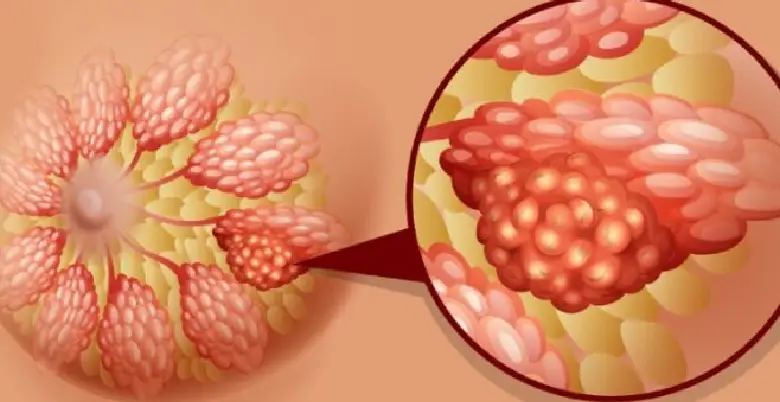
- Regular self-examination of the breasts is an effective way to monitor breast health and detect any changes early.
- Breasts are physically examined for lumps, changes in size or shape, and other abnormalities during a clinical breast exam performed by a medical professional.
Read about – Panchakarma Treatment
Methods of Imaging
Mammograms are X-rays of the breast performed for the purpose of detecting and preventing breast cancer. It has the ability to detect abnormalities long before they manifest as lumps.
- Ultrasound: Ultrasound imaging, in which sound waves are used to create images of breast tissue, is frequently used to further evaluate suspicious findings after initial mammographic examination.
- In high-risk patients or when more data is required to determine the full scope of the disease, magnetic resonance imaging (MRI) may be recommended.
Biopsy
Imaging and physical examination can only detect abnormalities; a biopsy is required to confirm a diagnosis. Breast biopsies can be classified as either
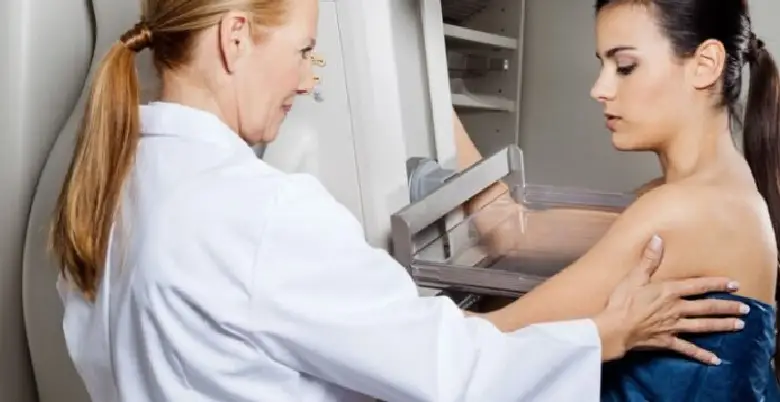
- Aspiration of a tiny sample of tissue or fluid from a suspicious area using a thin, hollow needle is known as fine-needle aspiration (FNA).
- Needle core biopsy involves using a larger needle to remove a small core of breast tissue for further study.
- Biopsy Surgery: The lump or a small piece of breast tissue is surgically removed to conduct the biopsy. If the results of a conventional biopsy are ambiguous, this is often the next step.
You can also look at : Proton Therapy
Set Design
When breast cancer is detected, the next step is to learn how far along the disease process it is. The stage of a cancer is a key factor in deciding how to treat it. The TNM system is the standard for classifying breast cancers into stages.
- T (Tumor): Specifies the primary tumor’s size and location.
- If the cancer has spread to nearby lymph nodes, the N value will be higher.
- If the cancer has spread to other parts of the body, it will be indicated by the letter M.
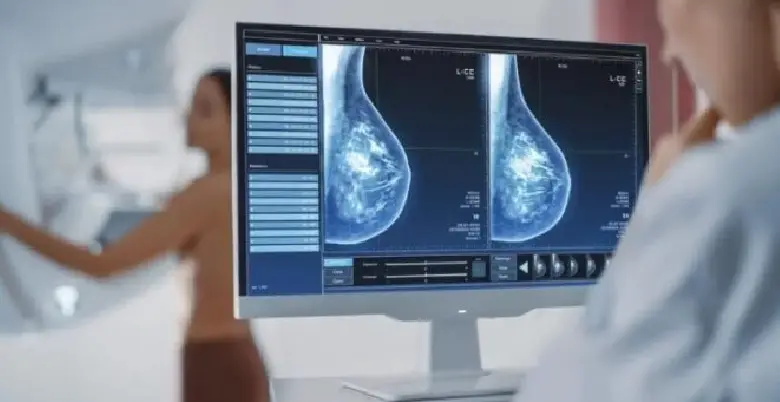
Treatment of Breast Cancer
Breast cancer treatment varies from patient to patient based on their specific diagnosis, cancer stage, and other factors. Breast cancer treatment options may include:
The Operation
Cancerous lumps can be surgically removed along with a margin of healthy tissue in a procedure called a lumpectomy. It is most commonly used to treat breast cancer in its early stages.
In a mastectomy, the patient has both breasts surgically removed. Among the various mastectomies available are. Mastectomy, or complete breast removal.
Note – Liver cancer
Modified Complete breast and lymph node removal is what’s meant by the term “radical mastectomy.”
Extremely uncommon, a radical mastectomy removes not only the breast but also the chest muscles and lymph nodes beneath it.
Armpit lymph nodes may be removed during a procedure called an axillary lymph node dissection to check for cancer’s spread.
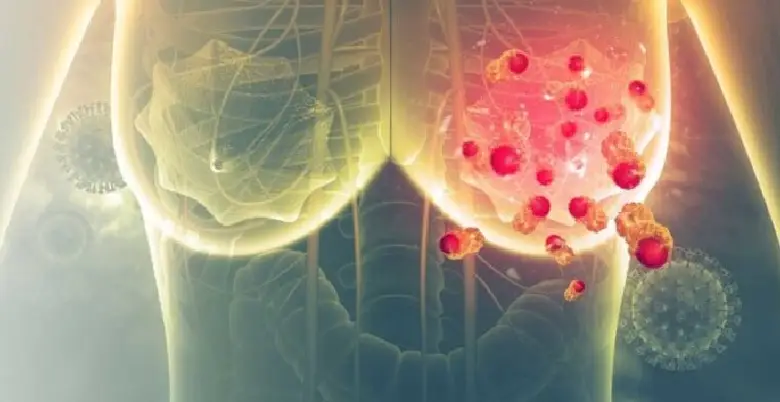
- Radiation Therapy: High-energy X-rays or other particles are used in radiation therapy to kill cancer cells or slow their growth. It’s commonly used after surgery to kill any lingering breast or lymph node cancer cells.
- Therapeutic Chemotherapy: Cancer cells throughout the body can be eradicated with the help of chemotherapy, a systemic treatment. It is commonly used as a neoadjuvant therapy to shrink tumours prior to surgery or when breast cancer has spread beyond the breast or lymph nodes.
- The Hormone Replacement Therapy: Those with hormone receptor-positive breast cancers are the primary targets of hormone therapy. The hormones oestrogen and progesterone can fuel some breast cancers, so this treatment involves blocking their effects with medication.
- Specific Treatment: The goal of targeted therapy is to inhibit the growth of cancer cells by blocking the action of specific proteins or receptors. For HER2-positive breast cancers, it is a common treatment option.
- Immunotherapy: Immunotherapy is a cutting-edge method of treating cancer that works by training the patient’s immune system to recognise and destroy malignant cells. Despite encouraging results in testing, it is not yet commonly used to treat breast cancer.
- Human Testing: Innovative treatments and therapies that are still in the clinical trial phase are made available to participants. Some people with breast cancer can benefit from taking part in clinical trials.
- Tailored Medical Care: Cancer patients often receive treatment that is uniquely designed for them based on their disease’s unique characteristics. In order to achieve the best results, a combination of the above therapies may be necessary.
- Safety Measures and Avoidance: Several important measures can be taken to lower one’s risk of developing breast cancer.
Adjustments to Way of Life
The risk of developing breast cancer can be lowered by eating a diet high in fresh produce, whole grains, and minimally processed foods.
Also read about – Heart Transplant
- Regular Exercise: Regular exercise has been linked to a reduced risk of developing breast cancer.
- Reducing Alcohol Intake: Excessive drinking is associated with an increased risk of breast cancer. This risk can be reduced or eliminated by not drinking at all.
Keeping a healthy weight is crucial because being overweight raises a woman’s risk of developing postmenopausal breast cancer.

- Replacement of Hormones: Hormone replacement therapy (HRT) is used to alleviate menopausal symptoms, but it has been linked to an increased risk of breast cancer. Talking to a doctor about the pros and cons of HRT is a must if you’re thinking about getting it.
- Routine Checkups: Mammograms and clinical breast exams should be performed routinely. Because age and personal risk factors can affect screening recommendations, it’s important to talk to a doctor about what screenings are right for you.
- Genomic Analysis: Breast cancer tends to run in families, so people with a history of the disease or known genetic mutations like BRCA1 and BRCA2 may want to get tested for it so they can determine their risk and take preventative measures accordingly.
- Extending the Breastfeeding Period:Women who are able to breastfeed are strongly encouraged to do so because of the potential protective effects of breastfeeding against breast cancer.
Breast cancer is a major health problem that affects millions of people all over the world. Improving outcomes for patients with breast cancer requires early detection, accurate diagnosis, and individualised treatment plans.
Read more : Limb Lengthening Surgery
The first step towards mitigating this disease’s effects is becoming familiar with its signs and symptoms, as well as its risk factors and recommended screening procedures. Research, prevention, and treatment of breast cancer continue to face formidable obstacles.
However, the future holds hope for improved outcomes and the ultimate goal of preventing and curing breast cancer thanks to ongoing efforts in education and awareness as well as continued progress in medical science.